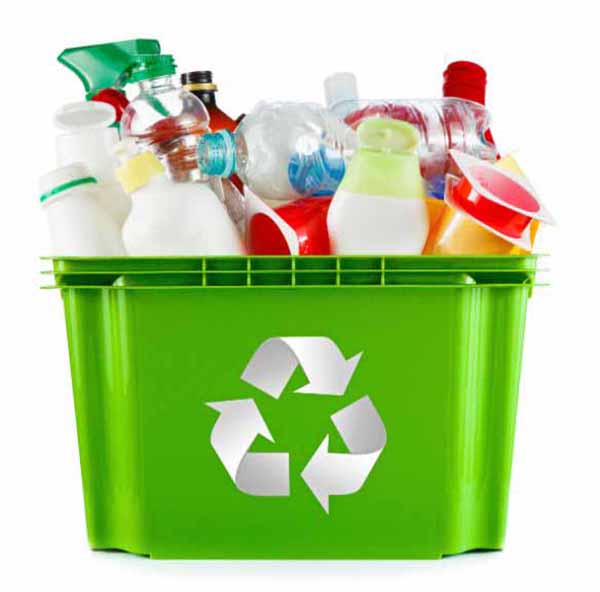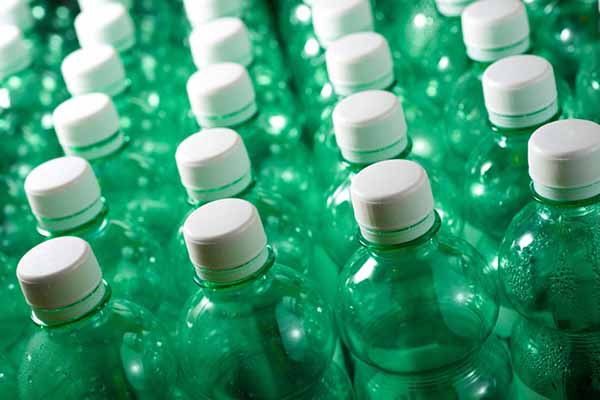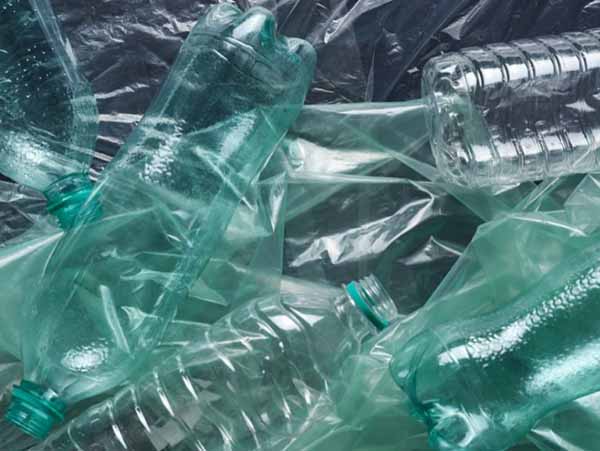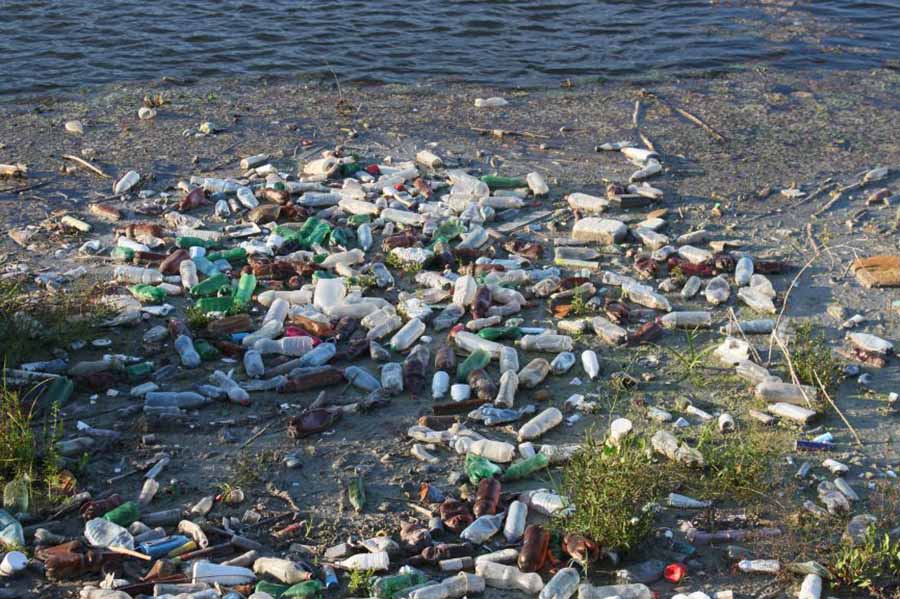Every year, millions of plastic water bottles end up in landfills and oceans. They pose a significant threat to our environment.
Since the concern about pollution and climate change is growing, you can ask: Are plastic water bottles biodegradable?
In this article, we will discuss the biodegradability of plastic items and whether biodegradable plastics reduce waste. Let’s learn all the details about biodegradable plastic water bottles.
Are Plastic Water Bottles Biodegradable?
Plastic water bottles are usually made from polyethylene terephthalate (PET), a type of plastic that is not biodegradable.
This means that PET doesn’t naturally break down into harmless materials. Instead, it breaks down into tiny pieces called microplastics. Unfortunately, microplastics can stay in the environment for a very long time and potentially cause harm.
However, there are certain types of plastics that are biodegradable. More specifically, they can be broken down by bacteria and fungi into safe substances like water and compost. Examples include plastics made from natural materials, like polylactic acid (PLA).

What Are The Problems with Traditional Plastic Bottles?
Before getting into the details, here’s what trouble traditional plastic water bottles make.
Environmental Pollution
Traditional plastic bottles that are made from materials like polyethylene terephthalate (PET) can linger in landfills for up to 450 years. They often end up in our oceans and landscapes and create long-term pollution that harms ecosystems.
Microplastics
As these bottles break down slowly, they fragment into microplastics. These tiny particles spread through soil and water, where they pose risks to wildlife and even enter the human food chain.
Harm to Wildlife
Animals often mistake plastic waste for food. Consuming plastic can lead to severe health issues, blockages, and even death for wildlife.
Recommended: How To Remove Soap Taste From Plastic Water Bottles?
Different Types of Plastics: Bio-based, Biodegradable, and Oxo-plastics
When it comes to plastics, terms like “bioplastics,” “bio-based,” “biodegradable,” and “oxo-plastics” can be confusing. Here’s a clear breakdown:
Bio-based Plastics
These are made from renewable resources, like sugarcane or starch, instead of fossil fuels. They might sound eco-friendly, but not all of them break down naturally. Some, like polylactic acid (PLA), are biodegradable, while others act just like regular plastics and should be recycled.
Biodegradable Plastics
Biodegradable plastics can break down completely, thanks to microorganisms. They transform into harmless substances like water and carbon dioxide. PLA is a great example, but it needs the right conditions to biodegrade properly.
Oxo-degradable Plastics
Well, Oxo-degradable Plastics are a different story. These plastics break into tiny fragments when exposed to oxygen and sunlight and turn into microplastics that can pollute our environment and even end up in our food. That’s why many experts and organisations are against them.
In short, not all bioplastics are biodegradable, and oxo-degradable plastics can cause more harm than good.
Recommended: Stainless Steel vs Plastic Water Bottles- Which Is The Better Option?
Which Plastic Water Bottle Is Biodegradable? How’s It Made?
Polylactic acid (PLA) is a biodegradable plastic that stands out for its eco-friendly production process and its ability to break down naturally. PLA plastic water bottles are perfect for carrying water, juice, and milk.

Here’s how PLA plastic is made:
- Plant-Based Raw Materials: PLA is derived from renewable resources like corn, sugarcane, or cassava. These plants are rich in carbohydrates, which are essential for the production of PLA.
- Fermentation Process: The process begins with the fermentation of these plant-based carbohydrates. Through bacterial fermentation, these carbohydrates are converted into lactic acid.
- Polymerisation: The lactic acid is then polymerised to create PLA. This process links the lactic acid molecules together, forming long chains known as polymers, which are the building blocks of PLA.
- Use of Agricultural By-Products: In addition to using crops, the process can also utilise agricultural by-products like stems, straw, and leaves. These materials, which would otherwise be waste, can be processed into the carbohydrate sources needed for PLA production.
- Sustainable Energy Use: Any residue that cannot be fermented can be used as a heat source, further reducing reliance on fossil fuels during the manufacturing process.
Pros and Cons of PLA Plastics
Polylactic acid (PLA) plastics offer several benefits but also have some drawbacks. Here’s a look at both sides:
Pros of PLA Plastics
- Eco-Friendly Composting: PLA is designed to break down in commercial composting facilities within about twelve weeks. This is much quicker compared to traditional plastics, which can hang around for centuries and turn into microplastics.
- Recycling Potential: PLA can be recycled back into its original form through special processes. This means you can reuse it to make new PLA without losing its quality. Right now, though, the infrastructure for PLA recycling isn’t fully developed, so composting is usually the better option.
Cons of PLA Plastics
- Environmental Impact: Growing the crops needed for PLA, like corn or sugarcane, requires land and water. This can affect our ecosystems, even though PLA uses a very small portion of the land.
- Higher Costs: Making PLA can be more expensive than traditional plastics because of the extra steps in production. As PLA becomes more common, prices might drop, but for now, it can cost more.
- Composting Limits: PLA is great for industrial composting but isn’t suitable for home composting systems yet. Although there’s hope for improvements in the future, it’s not quite there yet.
Recommended: How Are Plastic Water Bottles Made?
How to Identify Compostable Plastics: Standards and Labels
If you can recognise compostable plastics, you can ensure their proper disposal and environmental impact. Compostable plastics are designed to break down in industrial composting facilities, but they must meet specific standards to be labelled as such.
Here’s how you can identify them:
Standards for Compostable Plastics
- ASTM D6400 (U.S. Standard): In the U.S., this standard tells us that plastic is compostable if it can break down in industrial composting facilities and doesn’t leave harmful residues.
- EN 13432 (EU Standard): In Europe, this standard is a bit stricter. It requires that at least 90% of the plastic breaks down within six months in industrial composting conditions. The plastic should also disintegrate into small pieces within 12 weeks, and the compost produced should be safe for plants.
- EN 14995 (For Non-Packaging Items): This standard is similar to EN 13432 but applies to non-packaging items like compostable cutlery. It ensures these items meet similar standards for breaking down and being eco-friendly.
Key Requirements of EN 13432
- Chemical Composition: The plastic must meet specific limits for organic matter and heavy metals to ensure the compost is safe.
- Biodegradation: At least 90% of the plastic should break down into CO2, water, and minerals within six months.
- Disintegration: The plastic must break into small pieces that can pass through a 2x2mm sieve within 12 weeks.
- Compost Quality: The compost should not harm plant growth, ensuring it’s environmentally safe.
What Are The Alternatives to Disposable Plastic Water Bottles?
Biodegradable plastic water bottles are good for the environment, but they also have potential drawbacks. For this, biodegradable plastic water bottles are not a promising solution to plastic waste.
Here are some better alternative options.

Glass Bottles
Glass offers a clean taste, maintains drink temperature well, and is infinitely recyclable without losing quality. While glass bottles are fragile, they provide a long-lasting and eco-friendly choice when handled with care.
Stainless Steel Bottles
Stainless steel is known for its excellent insulation properties, keeping drinks cold or hot for extended periods. Lined versions eliminate metallic tastes, making them a robust, long-lasting alternative.
Ceramic Bottles
Ceramic is another durable option that keeps beverages cold and is less likely to impart flavours. Though heavier and more breakable than glass, modern advancements have made ceramic bottles more practical, with added features to reduce fragility.
Reusable Bottles
No matter which material you choose, picking reusable bottles reduces waste. Investing in a durable and easy-to-clean bottle is one of the most effective ways to minimise your environmental footprint.
FAQs
Where Do Plastic Water Bottles End Up?
Plastic water bottles end up in landfills. Many also end up in oceans and rivers and cause water pollution and harming marine life. Some plastic bottles are recycled. However, bottles that are not processed correctly lead to waste eventually.
Do Plastic Water Bottles Cause Global Warming?
Yes, plastic water bottles contribute to global warming. The production of plastic bottles involves burning fossil fuels, which releases greenhouse gases like carbon dioxide into the atmosphere. These gases trap heat and cause climate change. Also, plastic bottles can release methane, a potent greenhouse gas, as they break down in landfills.
Last Words
Hopefully, you have no confusion regarding “Are plastic water bottles biodegradable” anymore.
Traditional plastic water bottles are not biodegradable. These plastics can persist in the environment for hundreds of years and break down into harmful microplastics that pollute ecosystems.
Some biodegradable options, like PLA bottles, break down more quickly under industrial composting conditions. However, they are not suitable for all waste management systems.
To minimize environmental impact, try to use reusable water bottles.

